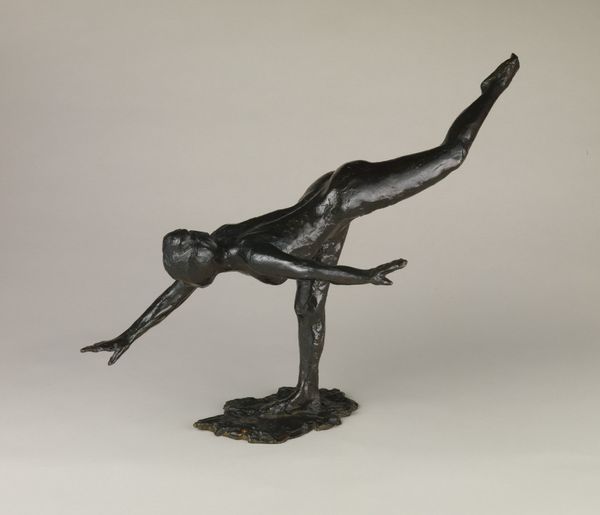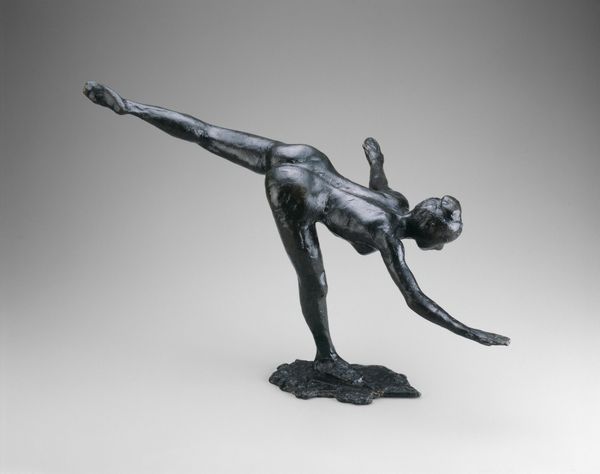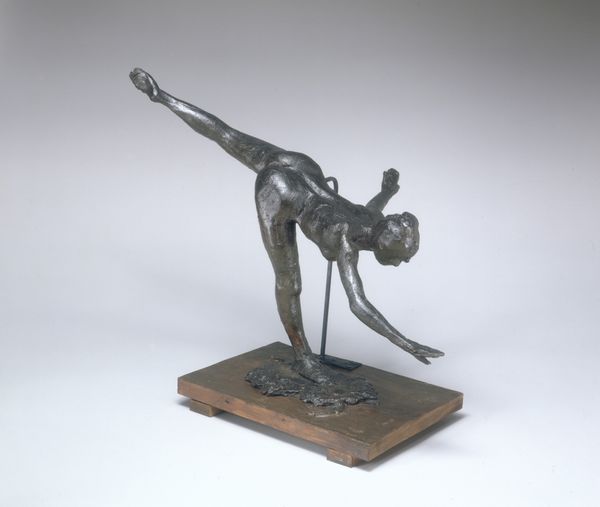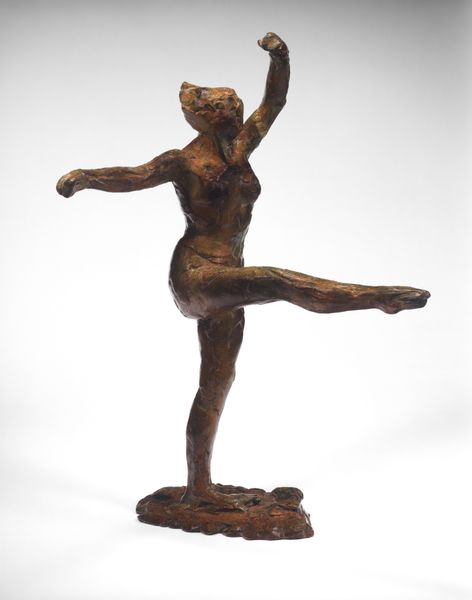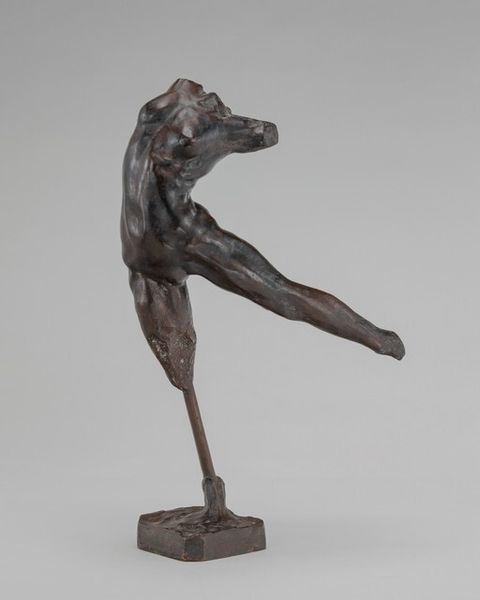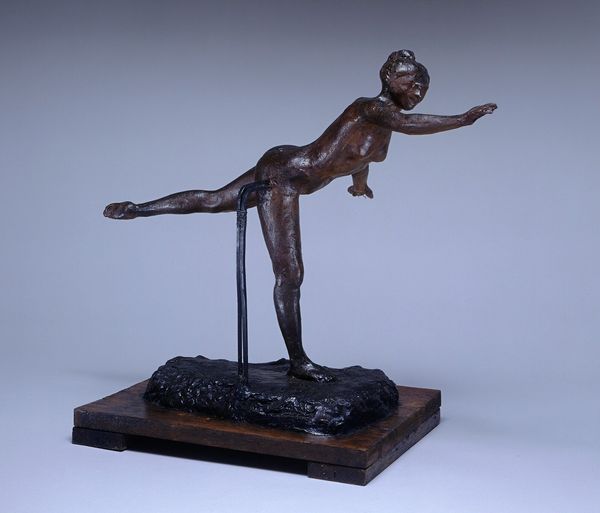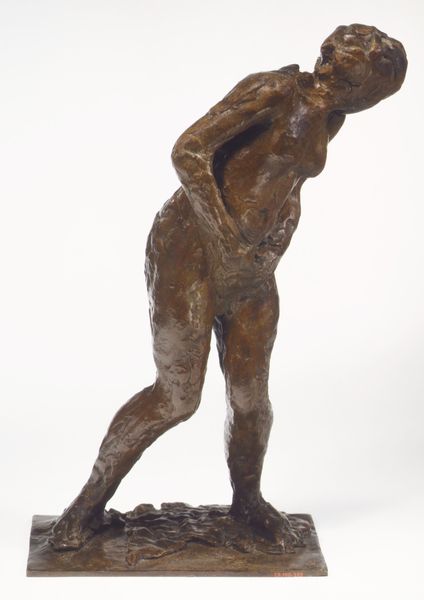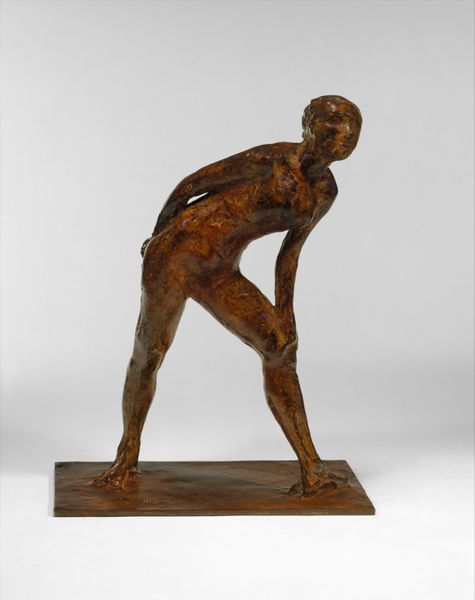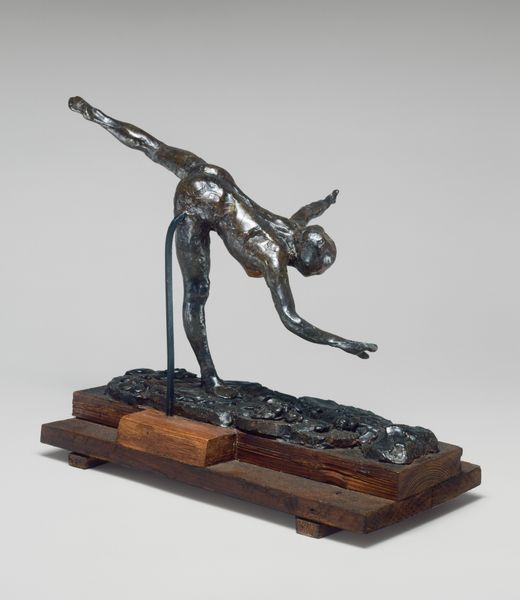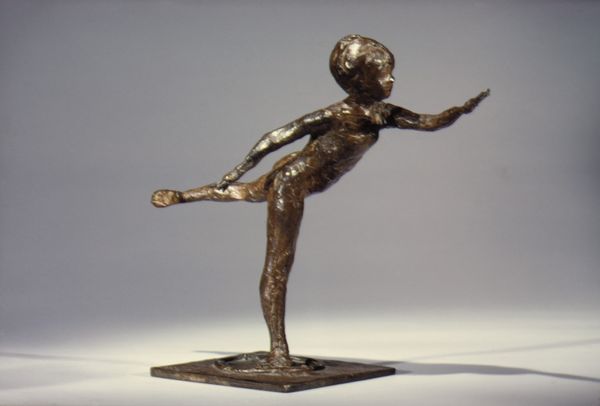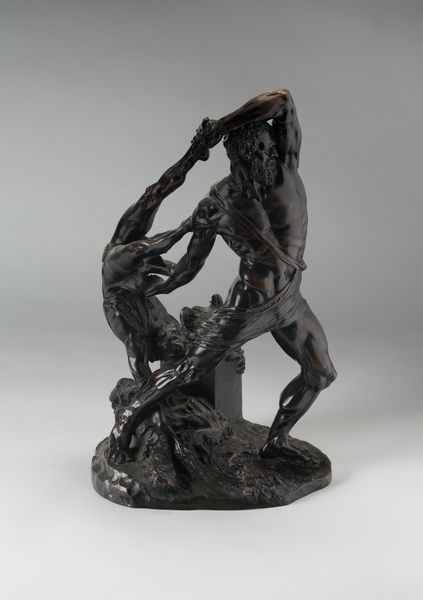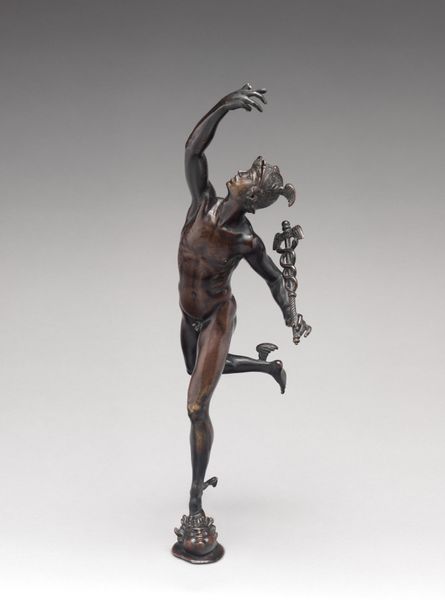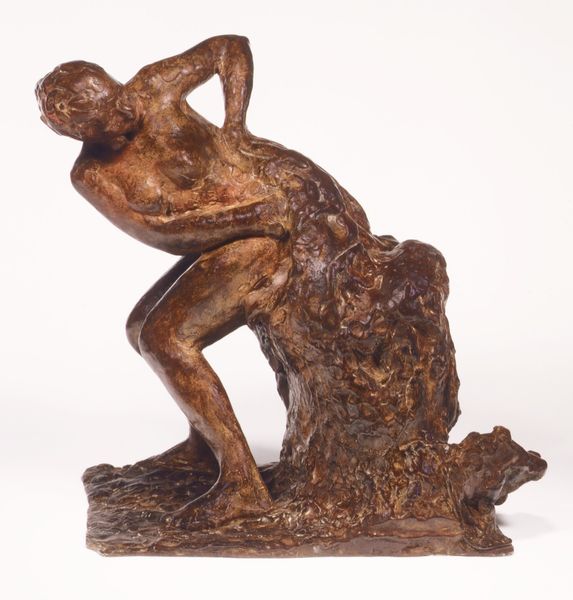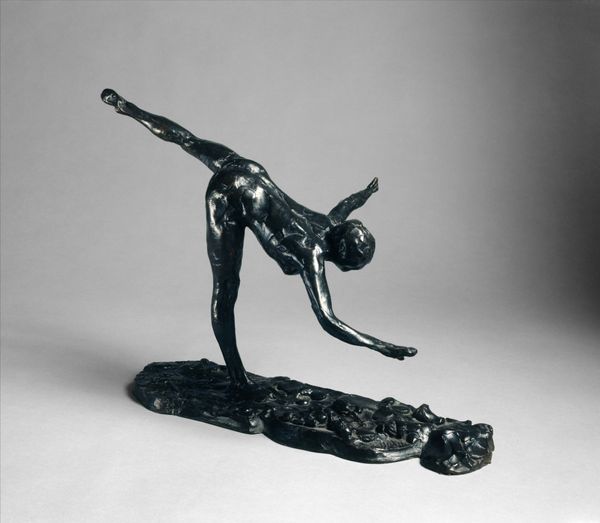
Dimensions: 17-1/4 x 21-1/2 x 9-5/8 in. (43.8 x 54.6 x 24.4 cm.)
Copyright: Public Domain
Curator: Looking at this bronze sculpture, “First Arabesque Penché,” created by Edgar Degas sometime between 1887 and 1920, I'm struck by how gravity seems to both define and defy its form. Editor: Yes, there's a potent feeling of controlled release—almost painful control. She's arched and reaching but also restricted. There's an internal tension that mirrors the external struggle for female artists to transcend historical stereotypes. Curator: I see how that tension resonates. The arabesque, in ballet, is typically associated with an idealized image of grace, and here, the form is undeniably present but roughened and weighted by the materiality of bronze. It moves away from simple depictions. Editor: Exactly. The dancer's form, rendered in bronze, speaks to the labor and physical endurance required of these performers—a side that is generally rendered invisible within popular, largely male, fantasies about the ballet. Degas captures an alternative story, but is he merely replicating the voyeurism that has come to characterize the industry? Curator: The "arabesque" motif in Western art has complex roots, frequently appropriating poses from Eastern art to evoke a sense of exoticism, but here Degas places this idealization under scrutiny. Do you agree? Editor: I find it hard to ignore how such representations, however artistic, contribute to a broader cultural pattern where women's bodies become objects of scrutiny, especially in performing arts. Curator: That makes me see this artwork in a completely different light now. So you are more inclined to approach this bronze sculpture as a symbol of the dancer's real world conditions and not necessarily its beauty. Editor: That's correct. Considering the power structures at play is more interesting for me than approaching Degas from a solely art-historical perspective. Curator: I see, by understanding both historical art symbols, plus the sociopolitical contexts they emerge from, one can see different meanings—adding greater layers to art that some might see only on the surface. Thank you. Editor: Thanks. It's rewarding to peel back these layers, seeing how art speaks across history but also continues to provoke essential conversations.
Comments
No comments
Be the first to comment and join the conversation on the ultimate creative platform.
